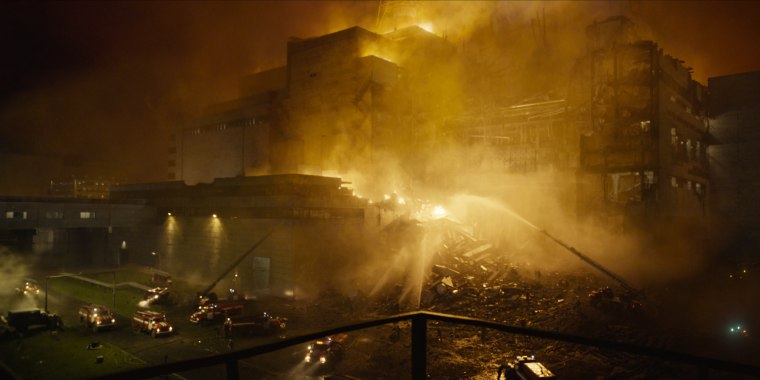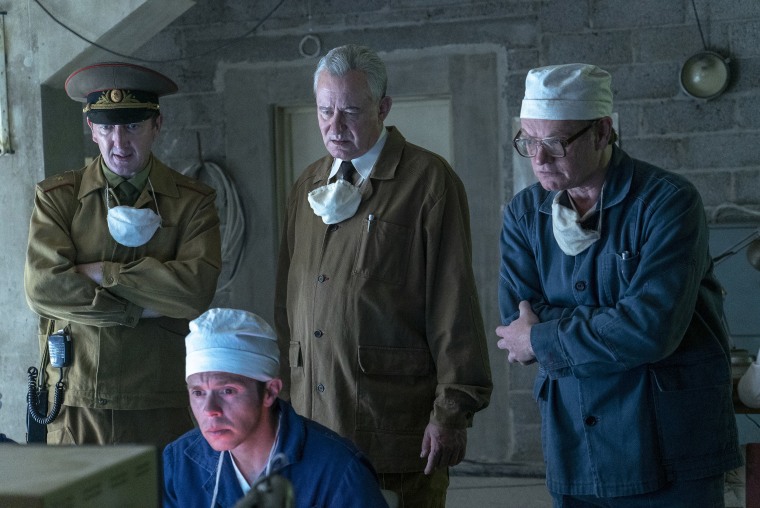Forget dragon fire, white walkers and medieval warfare tactics, the most gripping series on HBO this year so far is one whose horrors are all based in reality. The five-episode miniseries, which premiered at the beginning of May, started out as a bit of an underground sleeper, but has grown in the ratings. Its finale was Monday night.
The series, which attempts to be as accurate as possible about the 1986 catastrophe, is more than just a recreation of what is considered the deadliest nuclear accident in history. It’s also an indictment of the culture of lies and coverups that permeated the Soviet Union during that time period and the gross incompetence it fostered in the middle management ranks of government. Moreover, its timing feels deliberate, as the world grows desensitized to an American regime that also runs on a constant stream of lies.
The series, which attempts to be as accurate as possible about the 1986 catastrophe, is more than just a recreation of the deadliest nuclear accident in history.
For those who need a refresher, the tragedy at Chernobyl occurred in the early hours of the morning on April 26, 1986. During what was supposedly a routine nuclear safety test simulating what would happen during a power outage, a nuclear reactor exploded. It was the second nuclear power plant accident in a decade, after the Three Mile Island incident in Pennsylvania in 1979. But what sets Chernobyl apart from other serious nuclear mishaps is that, in most if not all of the other cases, the plant and the governments impacted worked together to prevent the accidents from spreading contamination beyond the initial meltdown. The USSR, at least initially, did not.
Want more articles like this? Sign up for the THINK newsletter to get weekly updates on the best pop culture news and analysis
In the case of Chernobyl, it took almost a full day for anyone to even admit the reactor core had exploded and 36 hours for the USSR government to acknowledge the neighboring town of Pripyat needed to be evacuated. To this day, the Chernobyl exclusion zone, an area of around 1,000 square miles, is still uninhabitable. The death toll is estimated to be in the thousands[BM(2] , though many disagree how many. (The official government number of casualties still claims only 31 were killed.)
The series opens with the death of nuclear physicist Valery Legasov (Jared Harris), who takes his own life on the second anniversary of the accident, almost down to the minute. It then jumps back in time to the moment of the explosion two years ago, and the frightening denial, scapegoating and ignorance that permeated the crucial first hours after the explosion. The early moments are a little hard to follow, a sea of European accents, mustaches, thick glasses and chaotic confusion, but that’s partially the point: No one knew what was going on, and efforts to make the reality of the situation known were shut down or ignored.
The second episode contains a priceless moment where a party official, presented with the truth about what is happening not far from his bureau by scientist Ulana Khomyuk (Emily Watson), responds “I prefer my opinion to yours.” It is a line that sums up the attitude of everyone in charge at the plant. They would prefer to believe that the reactor is just fine, and anyone who comes in to say otherwise — even the ones who may literally be dying — must be wrong.

Throughout the first four episodes, the series chronicled the fallout, both figurative and literal, of the accident. Nothing is left out, from the shock of what it looks like as a body dies from radiation-induced decay to the emotionally horrific reality of needing to put down all the pets left behind.
But the finale is the show’s crowning achievement. In it, the series jumps ahead to 1987 and the trial of the middle managers who ran the plant while simultaneously backtracking to the day before the explosion. The summation of events is damning. From falsified paperwork claiming previous tests were successful to petty power, the level of casual mendacity among the plant’s officials is astounding.
Clearly, there is a lesson here about those who rise to power because they know which boots to lick. But the series also serves as a broader indictment of the culture of secrecy that surrounds so much of governmental work. When lies are the currency of promotion, lies become the way of life.
It’s exactly these sorts of lies the American government is now disseminating every day, from the easily disproven — like how many people attend an event — to the larger ones about foreign governments and election tampering.
It doesn’t feel like an accident that “Chernobyl” came out now, 33 years after the accident, instead of in 2011 on the 25th anniversary, or 2016 on the 30th. Maybe “Chernobyl” is here now because it is a warning that allowing one's government to habitually lie to its citizenry can directly lead to the suffering of thousands. So far, the United States has been lucky. But “Chernobyl” stands as a reminder that these tragedies can and do happen. Even when they seem preventable.

